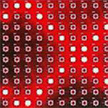| Oct 10, 2022 |
|
|
|
(Nanowerk Spotlight) Reporting their findings in Advanced Materials (“Time-division Position Sensitive Detector Image System for High-speed Multitarget Trajectory Tracking”), researchers in the School of Physics at Southeast University in Nanjing, China, demonstrate a multitarget real-time trajectory tracking system by using a time-division position sensitive detector (TD-PSD) system by employing a graphene-silicon Schottky heterojunction.
|
|
Benefiting from the high-speed optoelectronic response and submicrometer positional accuracy of the TD-PSD, the team realized multi-target real-time trajectory tracking with a maximum image output frame rate of up to 62 000 frames per second (which is superior to commercial optical high-speed motion capture systems of about <1000 frames per second). This breaks the bottleneck in precise high-speed trajectory tracking and multi-target detection of traditional position sensitive detectors.
|
 |
| Time-division position sensitive detector: High frame rate at high positioning accuracy, real-time processing, minimized data capacity, and frequency-related preprocessing capability. (Reprinted with permission by Wiley-VCH Verlag)
|
|
In recent years, the density of optical information and complexity has dramatically increased with the thriving of modern technology such as artificial intelligence. High-speed motion and multi target trajectory tracking play an essential role in numerous applications ranging from self-driving vehicles and guidance systems to robotics and film making.
|
|
High-speed cameras, including CCDs and CMOS image sensors, both have trade-offs between image resolution and frame rate due to the massive pixel array extraction process. These detectors can generate gigabytes of data in seconds, resulting in enormous data read-out and processing.
|
|
Take for example the PHANTOM v2512, a professional high-speed camera. The output bitrate is 37.89 Gb/s in 1280 x [email protected],700 fps recording mode. TD-PSD realizes real-time trajectory tracking in the manner of coordination recording. For a high resolution and speed trajectory tracking (16000 × 16000 @140 fps), the bitrate is only 924KB/s.
|
|
The data capacity of TD-PSD can be further optimized thorough multi-channel tracking. In motion capture applications, target movements often contain multifarious subpart motions with various critical information. This requires a motion capture system to not only record integral movement displacements but also precisely extract submotion according to specific categories. The most interesting submotion can be tracked in high frequency (or frame rate) and the data size of less important motions can be compressed.
|
|
In their work, the researchers designed a time-division TD-PSD imaging system through time-domain discrete optical signal processing. The size of the device is 14 mm ×14 mm. Photoexcited carriers are separated by a graphene/p-Si/n-Si cogenerated built-in electric field. The lightly p-doped Si layer works as a hole transport channel, while the highly conductive graphene layer behaves as an equipotential layer,leading to a uniform electron redistribution and a lateral electric field between the hole cluster and electrons (illustrated below).
|
 |
| Mechanism of the time-division PSD system. a) The structure and lateral movement mechanism of the carriers. The built-in electric field formed by graphene, p-doping and n-doping silicon jointly separates photogenerated carriers. The carrier redistribution process is demonstrated in the inset graph. Separated electrons in graphene are uniformly redistributed and casing a lateral electric field that drifts holes away from light spots (blue arrows). Other holes in the p-doping channel are motivated by the diffusion effect (red arrows). A gap between graphene and electrodes prevents electrons from being collected. (Reprinted with permission by Wiley-VCH Verlag)
|
|
In real application scenarios, ambient lighting, including sunlight and fluorescent lamps, causes low-frequency background noise and image distortion. This issue can be solved in the TD-PSD system without external filter. The high frequency sequential optical signals employed by the system are clearly distinct from ambient lighting. Therefore, the denoising capability of TD-PSD would greatly improve the accuracy and versatility of trajectory tracking systems in complicated environments.
|
Future research
|
|
The TD-PSD system provides a promising route toward high-speed multitarget trajectory tracking and imaging that alternative to CCD and CMOS sensors. In the future, the research team will look into further improving the detectivity. By combining TD-PSD system with time-of-flight approach, the system may achieve target scanning in 3D, thereby promoting the cost-effectiveness of Lidar.
|
|
Provided by the School of Physics, Nanjing University, as a Nanowerk exclusive.
|
|
|



